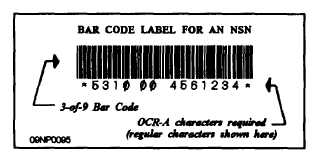| |
CHAPTER 11
AUTOMATED SUPPLY
With the ever-increasing use of automatic data
processing (ADP), it is inevitable that the Navy adapt
as many of its tedious and time-consuming tasks as
possible to automated procedures. In fact, the recording
and reporting discussed in the preceding chapters can,
to some degree, be accomplished by punched cards,
magnetic tapes, and bar codes.
This chapter discusses the more common
applications of automatic data processing with regard
to supply procedures. You are not expected to become
a Data Processing Technician, but since you will
undoubtedly work with some form of automated supply
during your time in the Navy, it is to your advantage to
understand the principles involved. You will be
concerned primarily with the Shipboard Uniform
Automated Data Processing System (SUADPS),
Shipboard Uniform Automated Data Processing
System-Aviation (SUADPS-AV), and the Shipboard
Nontechnical ADP Programs (SNAP I and II).
DATA PROCESSING TERMS
The growth of data processingc has resulted in a
vocabulary peculiar to that field. It is necessary that you
understand a few of the basic terms as you study this
chapter.
EAM—Electric Accounting Machine has the
capability to perform specific jobs. Each operation
must be controlled by an Operator. The machine reads
input from punched cards, performs arithmetic
computations much like a desk calculator, and produces
output in the form of listings and/or punched cards.
EDP—Electronic Data Processing uses electronic
circuitry (computers) to accept input from punched
cards, magnetic tapes, scanners, or typewriter
keyboards. They perform computations at very high
speeds, store and retrieve data, and produce output in
the form of punched cards, listings, and/or magnetic
tapes.
ADP—Automatic Data Processing is a term for
electronic data processing. Actually it is more
inclusive, covering both EDP and EAM. Current
emphasis is on computerized equipment. With the use
of optical scanners it is possible to have an ADP system
without the use of punched cards. However, you should
understand that ADP can and does include both.
BAR CODE—A bar code, called 3-of-9, can be
read by a scanner and is used in ADP. This code is
similar to the Universal Product Code (UPC) used on
grocery items. However, unlike the UPC, 3-of-9 can
represent more than just numbers. Figure 11-1 is an
example of a bar code label for an NSN.
INPUT—The data that is fed into an automated
system.
OUTPUT—The end result of input and machine
instructions that is produced in usable form (cads,
printouts, etc.).
All EAM/ADP operations must be covered by
detailed, step-by-step instructions to achieve the desired
results. The instructions for EAM operations are
referred to as PROCEDURES. They are divided into
separate steps that an operator must apply to each
machine by the use of a wired control panel. The
instructions for an ADP processing operation are called
a PROGRAM and may consist of a great many steps
that are performed autmatically in sequence. EAM
procedures are printed instructions to the operator. The
ADP program is coded instructions to the computer.
THE PUNCHED CARD
Many automated procedures make use of punched
cards. Figure 11-2 shows an example of a standard
80-column card and how the punch locations are used
to record data. Most of the cards you use will not look
like this one; e.g., the DD Form 1348m. They may be
Figure 11-1.—Example of a bar code label for an NSN.
11-1
|

